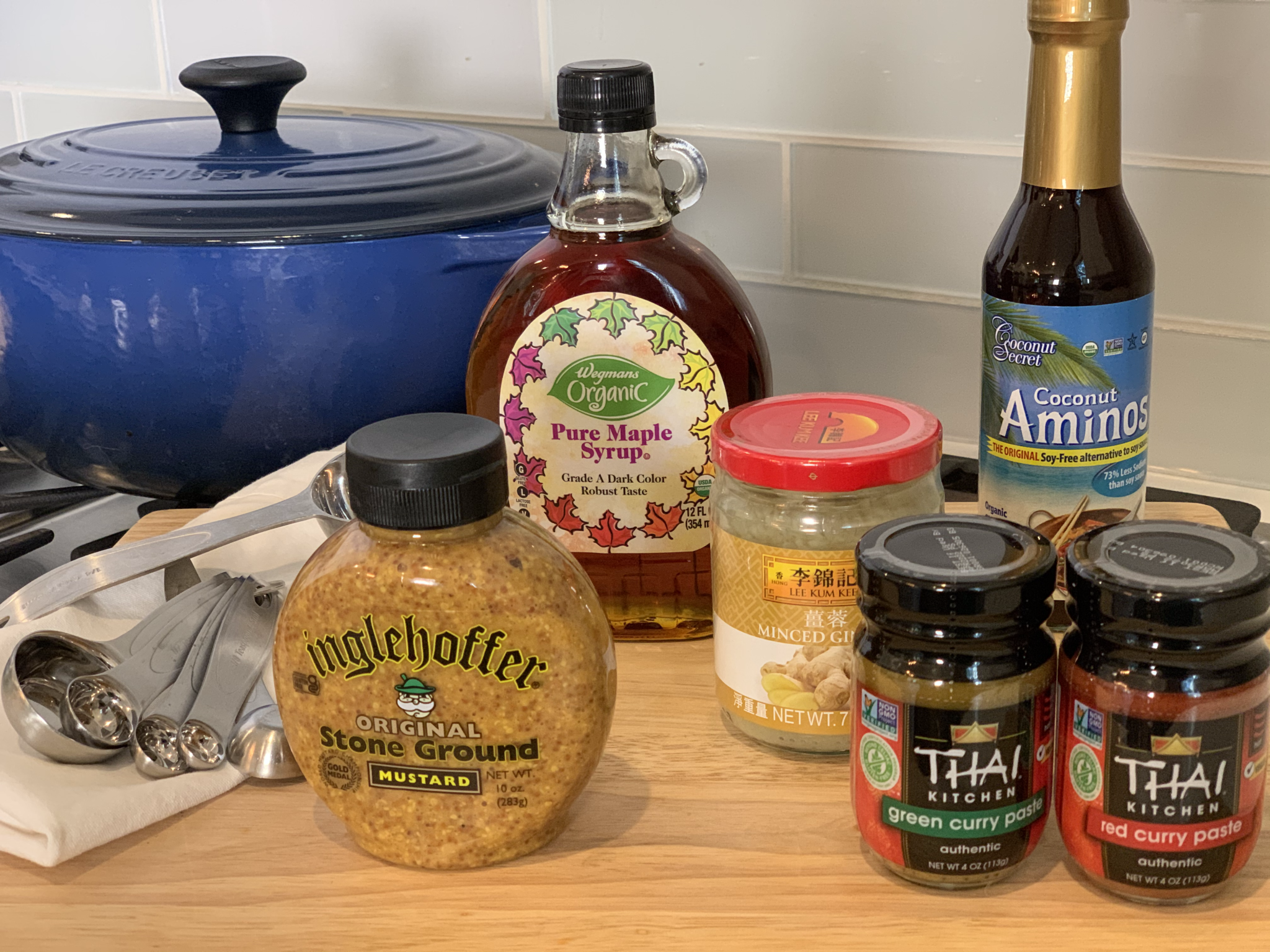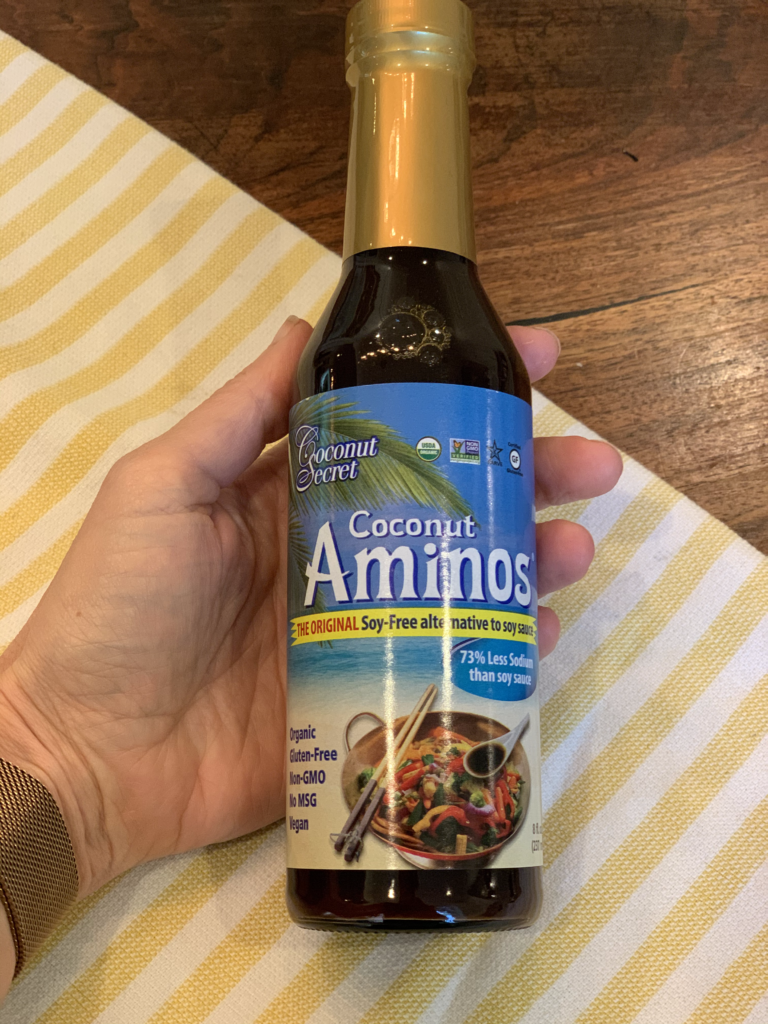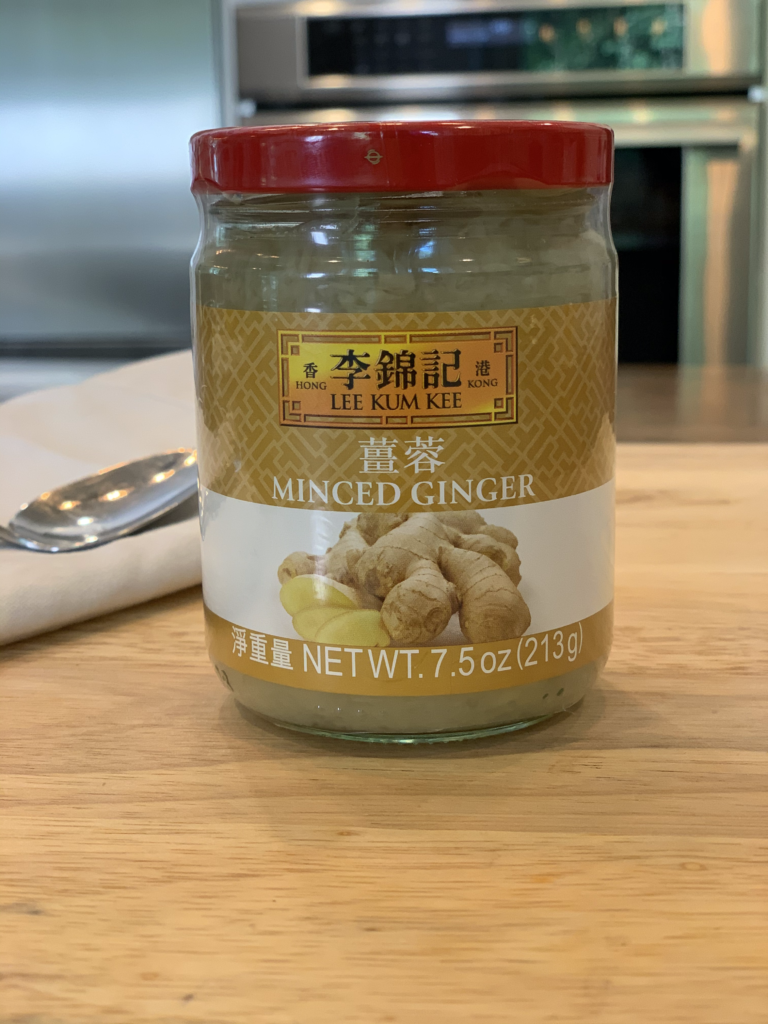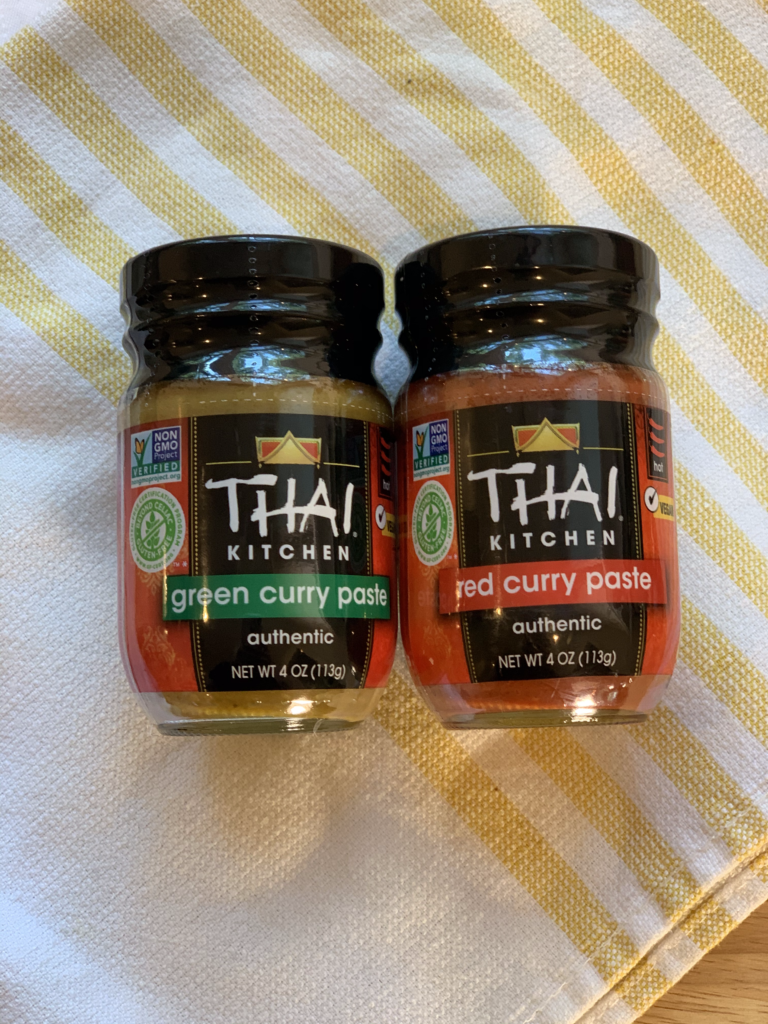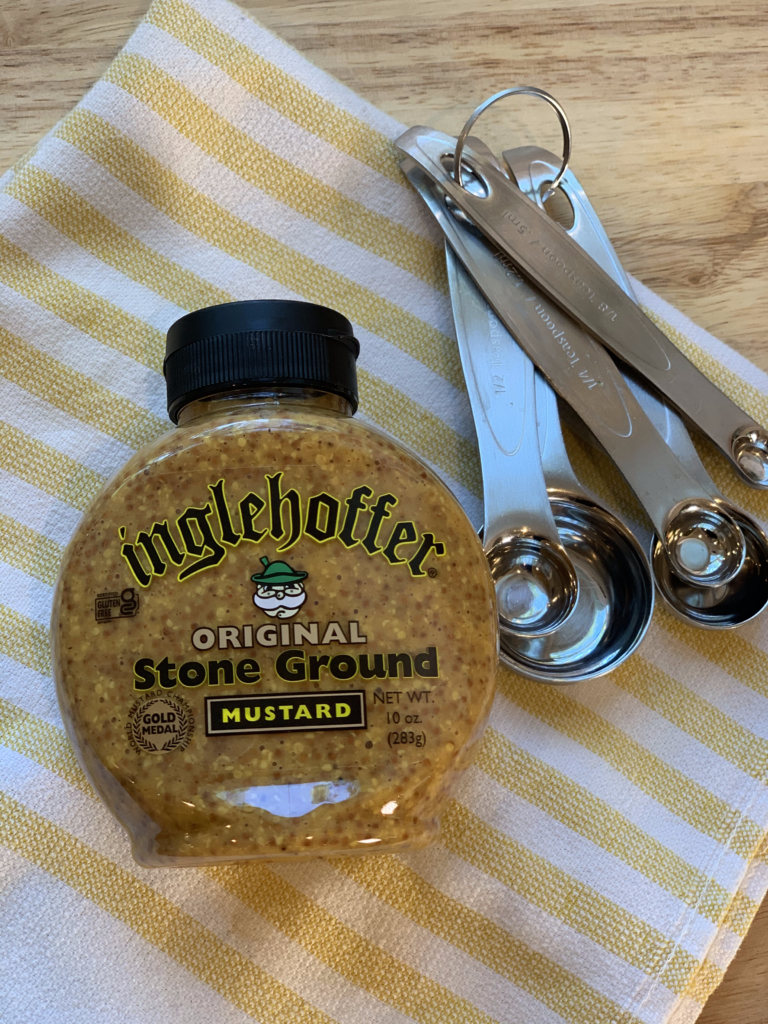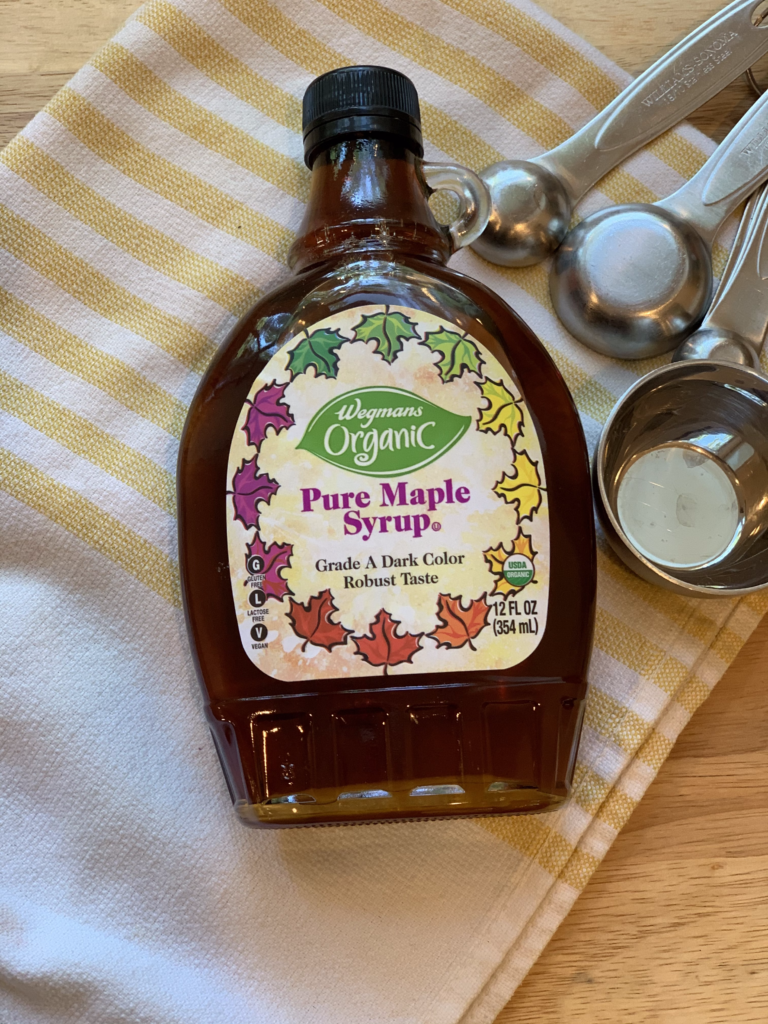Let’s call a spade a spade when it comes to cooking. The intimidating part about using ingredients you’re not familiar with is worrying you’re going to use them wrong and mispronounce them to your friends. (That can’t just be me, can it?)
Even if that’s not your barrier, I found that when I try new things in an attempt to eat a more healthy, varied diet, it takes a bit of trial and error before an ingredient I previously thought was “weird” becomes a normal part of my life.
As I’ve continued my healthy-ish eating over the years, I’ve found there are some simple ingredient switches or additions that make a big impact. These ingredients either provide greater health benefits to me and my family, or they just force us into trying totally new flavors and dishes. Which in my opinion, is key to beating boredom in the kitchen.
If you’re trying to eat healthier, here are 5 of my favorite ingredients to try.
Coconut Aminos
- What is it? A savory, salty sauce made from the sap of coconut palm and sea salt.
- Why should I have it? This is what I use in any recipe calling for soy sauce. In fact, we don’t even keep soy sauce in our house anymore. For a lot of people, soy can cause stomach troubles and inflammation. We don’t need to add either of those in this house if you know what I mean.
- How should I use it? So here’s the thing – coconut aminos literally swaps into ANY recipe that calls for soy sauce, and you’ll have no idea you’ve made the switch. At first you may want to add an extra pinch of salt, just to ease yourself into the transition and make sure the flavor feels the same. My family even likes to mix coconut aminos and siracha as a dipping sauce for frozen dumplings.
Minced Ginger – tiny yet powerful.
- What is it? Jarred, pre-chopped version of ginger root.
- Why should I have it? Aside from the fact that ginger has a lot of health benefits (it can be very settling to upset stomachs), it’s an amazing flavor booster, particularly used in lots of dishes from Asia and India.
- How should I use it? I love it in almost any soup that’s made with a squash base. A simple base of onions, chicken broth and any yellow/orange squash (like butternut or pumpkin) thrown in a high- powered blender will turn out so creamy you barely need to add anything else. But ginger just steps it up a notch. I find it’s best when balanced with something less sweet like garlic. Here’s a simple soup recipe I love.
Curry Paste – Green, red, yellow – try them all, find a favorite, keep it in the fridge.
- What is it? A little jar of heaven. Depending the type you buy, it’s that color of chili peppers, mixed with a few other key ingredients such as garlic, salt and other spices.
- Why should I have it? Even if you have memories burned in your nostrils of living above a curry restaurant (NYC anyone?) that may have left you scarred, you can find a million great recipes to explore with curry. It’s a major boredom buster and a way to add a ton of flavor when you’re trying to eat healthier.
- How should I use it? There are millions of amazing curry varieties that range in complexity like this or this – but my favorite everyday use is far more simple. Here’s my favorite side dish recipe.
- Sliced purple cabbage, 3-4 cups
- Warm 1-2 tablespoons of coconut oil (or any other oil you prefer) over medium heat
- Add a spoonful or two of any color curry paste in the pan and swirl it around to warm up in the oil. Start with 2 teaspoons if you’re nervous about the spiciness and add more as you go along.
- Add sliced cabbage and sauté, approx. 10 minutes. Let a few pieces get super crispy, yum.
- Salt generously & enjoy
Stone Ground Mustard – sounds quite normal, but wait!
- What is it? Mustard that’s made with coarsely ground mustard seeds, rather than obliterating them. Flavor-wise it’s milder than Dijon but the texture adds a little something-something.
- Why should I have it? If you grew up only eating mustard that’s super yellow, seeing a yellow jar of mustard with little brown balls floating in it may just look gross. But texture matters in the kitchen, and stone ground mustard can add a lot to a simple sauce or dressing.
- How should I use it? Stone ground mustard is great on everyday items like sandwiches but I find it’s also an incredible substitute in dressing recipes that may call for Dijon or even mayonnaise. One I make over and over again is a roasted cauliflower/chickpea salad from Gwenyth Paltrow’s first cookbook, It’s All Good. So good out of the oven, so good cold. Not so good if you have a husband who does not digest any sort of bean well. Moving on – the dressing makes the salad.
Maple Syrup
- What is it? Duh.
- Why Should I have it? Duh again – for pancakes and waffles. But there’s so much more!!
- How should I use it? It’s obviously not a weird ingredient, but when I wanted to eat healthier, I had to completely rethink how I used it. It’s a little jar of Vermont wonder that has so many purposes beyond breakfast. 10 out of 10 great homemade salad dressings include just 1-2 tablespoons of this natural sweetener. It’s also the main sweetener in my favorite zucchini oat muffins from Pinch of Yum (I skip the dates to make them more savory). Try swapping it for sugar in your next recipe and let me know how it goes.
When people tell me they hate to cook and ask for recipes or advice or ideas, I find that 90% of the time they’re really just bored. They don’t actually hate cooking, they’re just stuck in a rut of making the same 5 things each week. We’ve all been there. Especially if you have littles because what is the point of slaving over a creative meal if you’re going to end up making peanut butter crackers in the end?
What ingredients are you going to try in your next recipe? Tell me in the comments!
Note: Some of the items in this blog include Amazon Affiliate and other links which earn a small commission.
